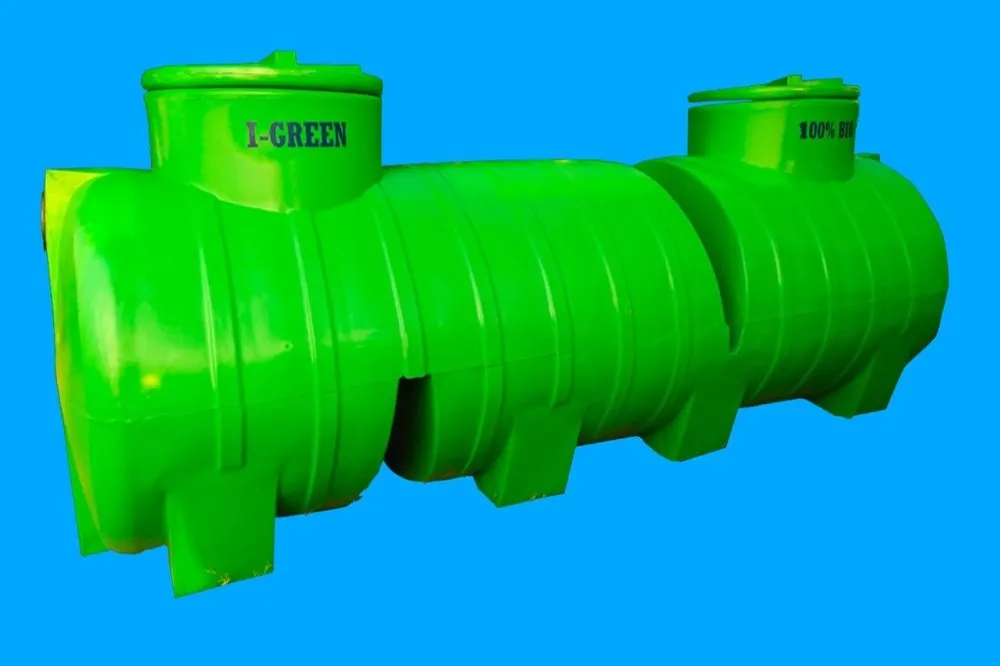Do you not agree that the management of sewage has always been one of the most important concerns? There have been many different attempts made to avoid environmental problems, but the only solution that has been successful is the use of bio-septic tanks. In contrast to non-bio septic tanks or conventional tanks, these tanks have shown to be effective at solving the problems associated with sewage management. Large quantities of sludge are produced by the non-biological tanks that are commonly attached to toilets in urban settings. This is as a result of the chemicals that are utilised within these tanks during the waste treatment process. In order to prevent the production of run-off in drinking water that contains a high percentage of pathogens from occurring as a result of the use of non-bio-septic tanks, the use of bio-septic tanks is required. The existence of pathogens poses a threat to the physical and mental development of children when they are present.
Comparing bio septic tanks with non-bio septic tanks and gaining an understanding of the dangers posed by the latter is necessary in order to gain an appreciation for the enormous benefits that bio septic tanks can provide.
Limitations of Non-bio septic tanks:
The infrastructure of non-bio septic tanks has its limitations, and they need to be cleaned and maintained manually on a regular basis. As a consequence, this leads to the contamination of groundwater as well as accidents.
On the other hand, bio-septic tanks put microorganisms to work breaking down waste in order to function properly.
Re-Leaf brings bio septic tanks:
Heavy-duty bio-tanks from Re-Leaf are designed to meet the requirements set forth by the Defence Research and Development Organisation (DRDO). This product is made entirely out of virgin materials, which guarantees its durability and ability to be recycled. These bio septic tanks are produced in factories that have been awarded the ISO 9001:2015 certification and are supervised by engineers who are qualified in accordance with the ISO 18436 standards. Over the course of its existence, Re-Leaf has been responsible for the installation of over 10,000 toilets, the conservation of 20 million litres of potable water, and the assistance provided to over 150 million people.
In comparison to non-bio-septic tanks, the degradation process in bio-septic tanks, which are scalable and sustainable, is ten times faster. In addition to this, the decomposition process only takes three to four days when it occurs in bio tanks, whereas it takes forty days when it occurs in non-bio septic tanks. Because there are zero methanogens, there is either a minimal or nonexistent problem with greenhouse gases. This sturdy and reliable tank allows for the repeated use of previously used water. The temperature can be adjusted according to the needs of the situation. Because there is less contamination in the discharge water, the aquatic ecosystem, also known as the life in the water, is preserved in good health. The removal of waste from bio-septic tanks does not require scavenging or manual labour. Because of the design that prioritises low maintenance, it is simple to inspect the chambers.
Varieties of bio septic tanks by Re-Leaf:
Tanks that have been modified specifically to meet the requirements can be made available. You might decide that the bio-septic tank is the best option for you after weighing factors such as filtration, recycling modules, storage capacity, and cost.
The Ultra Series by Re-Leaf includes three models of tanks moulded from polyethylene, and the Prime Series by Re-Leaf includes four models; both series are constructed out of fiber-reinforced plastic.
Ultra-series
Ultra-Series I: 20 flushes/day
Ultra-Series II: 40 flushes/day
Ultra-Series III: 60 flushes/day
Prime Series
Model B 3000: 65 flushes/day
Model B 5000: 100 flushes per day
Model B 10000: 200 flushes/day
Model B 20000: 400 flushes/day
Do not waste the waste:
You’ll be making a smart choice if you opt for bio septic tanks because they produce a number of valuable byproducts. Waste is digested by microorganisms in these tanks. The by-products, which include water, methane, and carbon dioxide, have economic value. Create useful byproducts while recycling human waste sustainably.
Segregating the solids from the liquids is an important first step in the waste treatment process. This is where the tanks’ internal compartments come in handy. They each handle garbage on a different scale. Wastewater treatment is based on a straightforward mechanism. When sewage is deposited into these tanks, the microorganisms already present in the tank begin the process of decomposing the sewage. Recycled water has no discernible taste or odour, and it can be put to good use in some situations. Pure water for gardening and irrigation can be made by adding chlorine to destroy harmful bacteria.
Yes, Bio septic tanks – a better choice:
People have become alarmed after learning horrifying statistics, leading to widespread adoption of cutting-edge bio-septic tanks. Advantages of bio-septic tanks became apparent after traditional tanks revealed their conditions. 5.3% of all deaths and 6.3% of all disabilities can be attributed to insufficient access to clean water, sanitation, and hygiene on a global scale.
Let the discussion of human waste management be lighthearted. Eliminate the ambiguity surrounding sewage management and restore hope for the environment in both urban and rural areas. Use cutting-edge technology to rid the world of disease-causing pathogens.
Invest in a Re-Leaf Bio Septic tank.

